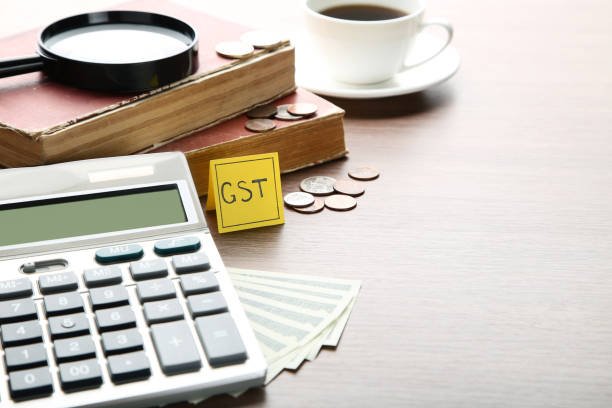What is the Goods and Services Tax (GST)?
Goods and Services Tax (GST) is an indirect tax on a wide range of goods and services in India. It simplifies the tax filing process and serves as one of the country’s most important taxation systems. GST replaced various other taxes, enabling business owners to pay a single, unified tax.
To register for GST, individual businesses must make an online application through the official website with information such as their name, address, email id and telephone number among other details The registration process also requires submitting supporting documents like PAN card, Aadhaar cards or any identity proof issued by the government authorities The entire registration process can take anywhere from two days to weeks depending on authentication times taken by different government bodies involved during this process
Once registered under GST, every taxpayer must file returns quarterly as prescribed by law periodically at specific intervals throughout each financial year beginning April st ending March st subsequently for every fiscal year This involves recording sales and purchases along with paying applicable charges within specified timeframes set out annually or quarterly depending on whether you’re operating above or below Rs crore respectively

Filing timely returns helps individuals avoid penalties imposed due to non-compliance-related issues and ensures compliance with various requirements set out within GSTR regulations, including monthly reconciliation and effective filing processes. Among other things, businesses make necessary declarations online or through approved software, ensuring simpler, more streamlined, and faster processes.Enrolling in a Tally course can significantly enhance one’s ability to manage these tasks efficiently, as it provides hands-on training in GST filing and accounting. This ensures confidentiality and accuracy remain intact for all submissions, allowing them to be processed accurately in future.
Lastly, taxpayers who miss deadlines may face overdue fines and even criminal prosecution if authorities find discrepancies. Filing returns promptly and keeping records updated helps avoid serious legal consequences. This is where the benefits of Tally courses become evident—they help individuals develop the skills needed to fill forms accurately and maintain consistent, compliant records. Best practice dictates that consistency is always key toward instilling trustworthiness into your transactions, thereby remaining compliant at all times proactively instead!

How Does GST Work?
GST, or Goods and Services Tax, has been in effect in India since 1st July 2017. It is a tax on the consumption of goods and services across the nation. To comply with the law, businesses must complete GST registration.
In this blog post, we will explain how GST works, why the government introduced it, and what it means for businesses across India. We will also cover GST rates, the registration process, duties and exemptions, filing returns, and more. This guide aims to answer common questions about GST taxes and regulations in India.
The government introduced GST to replace multiple indirect taxes with a single, unified system. This change simplified tax payments for businesses and created a common market between states. Under GST, commodities are taxed at uniform rates within each state, except for local sales taxes levied by municipalities or local governments.
To register for GST, business owners must have a PAN number, fill out the application form, and pay the prescribed fee. They need to submit required documents such as ID proof and address proof, provide details about their business operations, and share general information about their establishment or organization. Payment can be made online or through cheque deposits to designated authority bank accounts. After submitting the application and completing payment, the applicant receives an acknowledgement receipt. This confirms their registration, allowing them to access the benefits of the GST regime.
This comprehensive guide gives you clear insight into the Goods & Services Taxation structure in India, explaining how it works and what to keep in mind when registering. Through this article, we aim to make readers more knowledgeable about the new taxation system, covering all related aspects. This knowledge will help individuals and qualified representatives make better decisions when navigating the process, whether for themselves or on behalf of organizations or establishments.
Examples of GST in the Cost of Goods and Services
GST or Goods and Services Tax is a government-imposed tax on certain goods and services purchased in India. It replaced the earlier system of indirect taxes, which had several disadvantages. Businesses operating in India that meet a specific turnover threshold must register for GST. This article provides a comprehensive guide with examples of GST in the cost of goods and services, along with information on the registration process.
First, let’s look at common examples of GST in India. Buying food items like fruits and vegetables attracts no GST because they fall under basic necessities. In contrast, processed foods such as soft drinks are taxed at a certain percentage, and products like cement face higher rates. For services, essential ones like basic hotel stays remain exempt, while entertainment services incur GST at a specific rate. Luxury goods and services fall into even higher tax slabs.
Next, understanding GST rates is essential for anyone starting a business. If your main income comes from selling taxable products or providing taxable services, you must charge customers the applicable GST percentage. The collected amount must be reported through periodic GST return filings in your jurisdiction. While the process may vary slightly depending on whether the business is in manufacturing or trading, all businesses with turnover above the prescribed limit must register with the relevant state or union territory tax authority.
Thirdly let’s talk more about registering yourself with the relevant authorities, To begin with, one would need valid documents pertaining to both business address & identity proof along with personal details (like PAN Card No before logging onto the government portal
Making the Most of GST Maximizing Benefits for Consumers
Have you ever wondered what GST is and why it matters?
The Goods and Services Tax (GST) is a comprehensive value-added tax on goods and services purchased in India. The Government of India introduced it to replace the cascading effect of multiple indirect taxes that burdened consumers. In this blog post, we’ll explore how GST works, its benefits for consumers, tips to maximize its advantages, and the process for GST registration.
GST follows an across-the-board assessment system, ensuring that all parties involved—producers and sellers—pay tax at a uniform rate based on sale prices. This system differs from earlier taxation methods, where location or product type influenced the tax rate. Businesses, whether large or small, with annual sales exceeding ₹20 lakhs must obtain a valid registration number from the Central Board of Indirect Taxes & Customs (CBIC).
To make the most of GST benefits, understand the different rates charged for various products or services. Use invoicing schemes like the Input Credit System to claim receivable discounts, and take advantage of exemptions offered by bodies like the Export Promotion Council of India, which provides refunds on zero-rated exports. Follow best practices such as filing returns on time, completing quarterly forms with annexures when needed, and verifying input credit details in monthly reconciliation reports. Match each credit to its corresponding invoice to avoid losing potential claims or falling prey to fraudulent invoices.
Businesses can register for GST online via the dedicated e-filing portal or through specialist service providers. These experts offer end-to-end solutions, from web integration to compliance software, helping you process filings quickly and accurately. By simplifying workflows and reducing paperwork, these systems cut administrative costs while ensuring full compliance and protecting your business from legal risks.
Moreover, these services help eliminate errors, deliver high-quality outcomes, and satisfy customer needs through robust technologies that minimize processing time. They ensure the regularity of business transactions, helping businesses meet targets, complete assigned tasks competently, and generate revenues efficiently. By maximizing gains and enforcing proper legal protections, these platforms allow for safe, secure operations. Seamless integration with the regulatory framework builds strong linkages across the business ecosystem, supported by a secure technical infrastructure that ensures smooth implementation and successful results—leading to improved performance and guaranteed satisfaction.
In conclusion, understanding GST in simple terms helps businesses and individuals stay compliant with their taxes. By reviewing our seven key points, you should now feel more informed and ready to handle GST compliance in your business. If you’re unsure how GST applies to your situation, consult a professional. Stay updated on all regulations, including goods and services tax registration, filing requirements, and current rates, so you can confidently manage your GST obligations throughout the year.






